The rules of barrel racing, the only female-dominated rodeo sport, are simple. It’s the execution that’s hard.
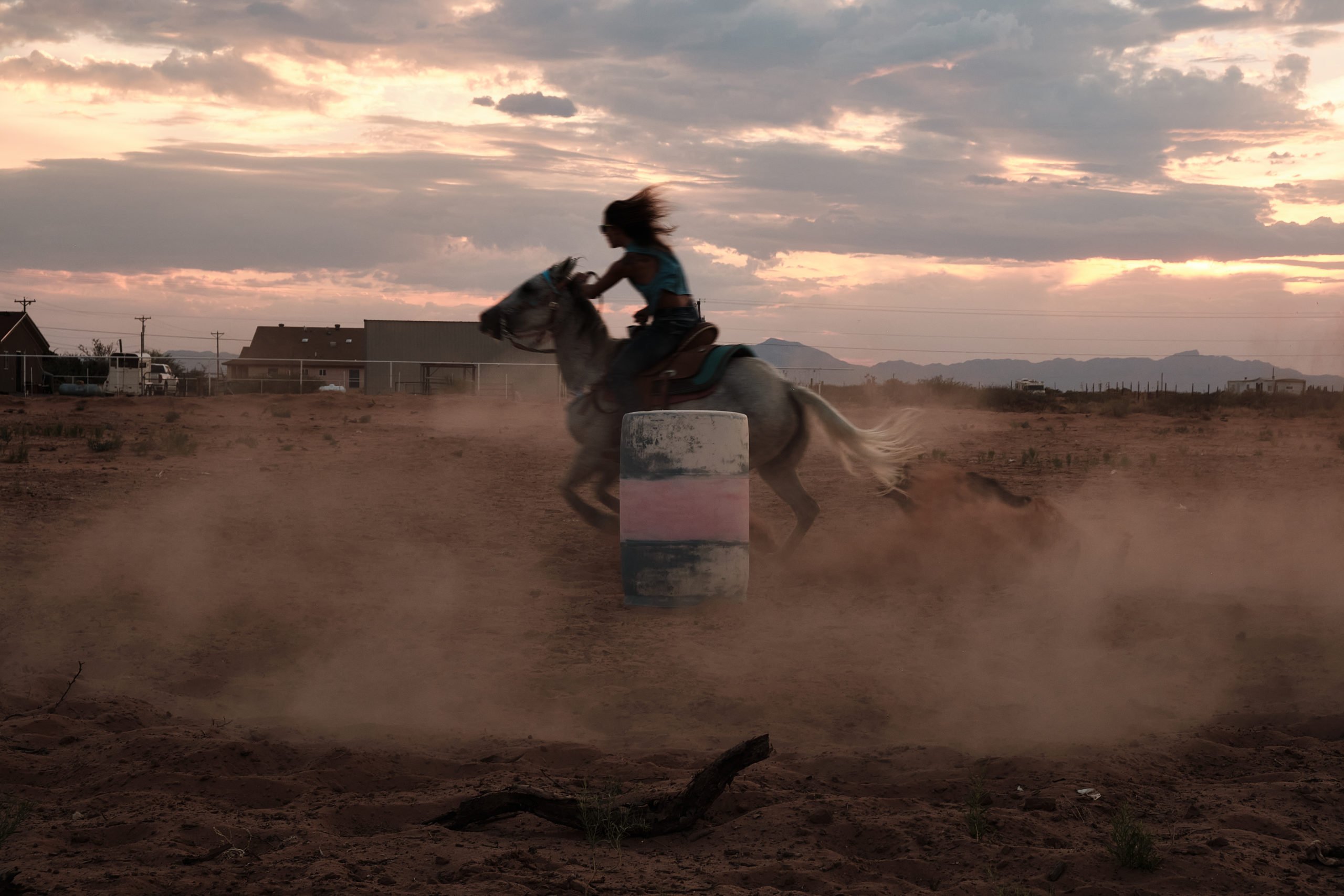
Text and photography by Henry Craver
March 22, 2021
From the March/April 2021 issue.
The horse breaks out of the gate at a slanted angle headed for the arena’s right-side fence. Just as the animal is nearing top speed, more than 40 miles per hour, it meets the first of the track’s three metal barrels. The rider, who to this point has been speeding her steer with spurs and vocals, must stop her 1,200-pound partner on a dime and twist the horse around the barrel as tightly as possible without knocking the barrel down. It takes an incredible deal of skill and guts to orchestrate such an extreme reversal of momentum. The rider repeats the process with the remaining two barrels. The last turn sets the duo up for a straight mad dash toward the exit. Depending on the competitors’ ability and the size of the track, the whole performance can last as little as 14 seconds.
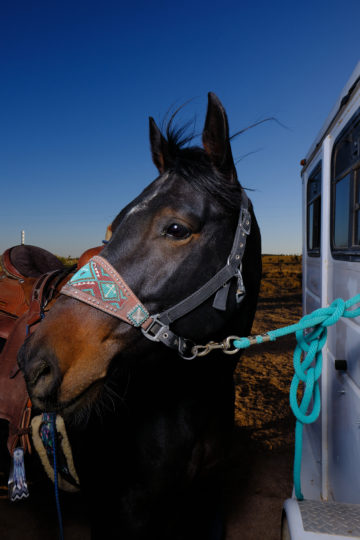
This is barrel racing. The rules are simple: The contestant and her horse perform a cloverleaf pattern around three barrels. There’s no standardized dimensions to barrel racing arenas, but generally the markers are spaced about 90 feet from one another. The pair can touch and even move the barrels, but knocking one over earns a five-second penalty—effectively dooming the run.
Barrel racing wasn’t an official sport until 1948. Before then, a similar pageant event was common at rodeos, where women were judged for the elegance of their riding but not their speed. In February 1948, a group of 38 women who’d briefly experienced the thrill of full rodeo participation during World War II met in San Angelo to form an all-female rodeo sanctioning body. The Girls Rodeo Association would later become the Women’s Professional Rodeo Association, which codified barrel racing, standardized the cloverleaf pattern, drafted rules on barrel knockdowns and other mistakes, and added a timer. By the 1950s, rodeo associations across the country were hosting barrel races. It’s as popular as ever today, and while most competitions are open to all genders, barrel racing remains a female-dominated environment. Women and girls make up the bulk of the competitor pools and regularly take home the biggest prizes.
I was invited to my first barrel racing competition in El Paso by a friend last summer and was struck by the beauty of the event and how friendly its participants and fans were. I asked a few of the racers if I could photograph them on their own ranches and at future events.
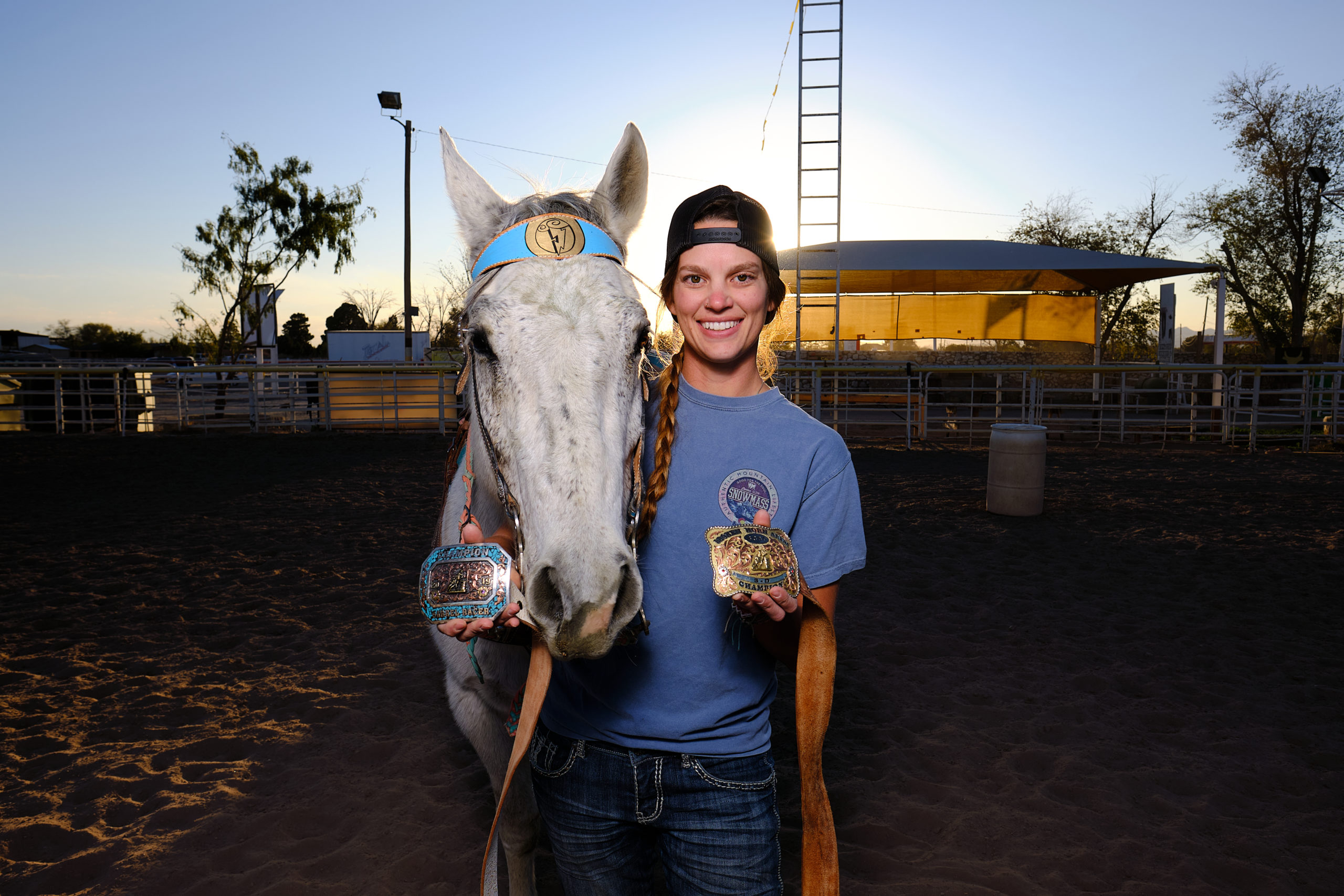
A barrel racer becomes professional as soon as she wins her first cash prize. Byrd doesn’t remember when she went pro, but she and Rip-Tide started making money in 2019. The duo boasts two first-place finishes to date. Although there are some significant cash prizes at the biggest national events, professional barrel racing isn’t all that lucrative. Byrd says that it’s more about satisfying her taste for competition than the money: “There’s always a new challenge to be taken on. You spot what you can improve after a run and implement those changes the next time. But you also have to be ready to make adjustments on the fly because no run is ever the same. It’s so rewarding to meet your goals and see yourself get better.”
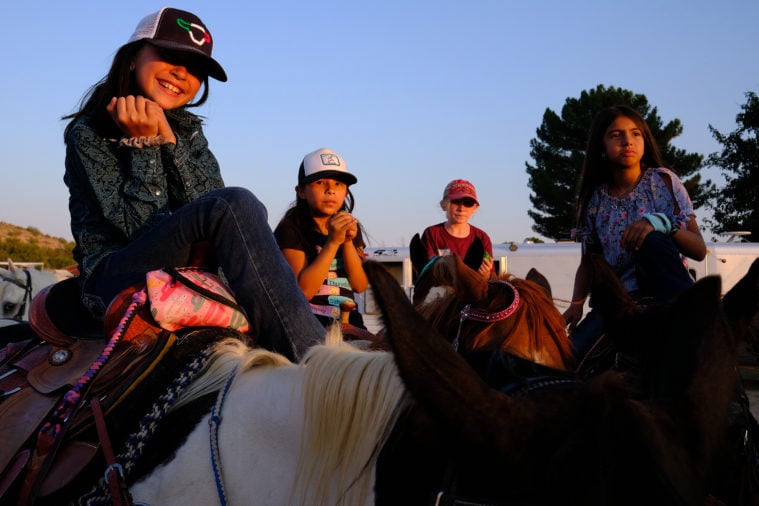
Andalisha Quintanilla (center left) waits with her friends before their runs at a competition in Clint. The all-day competitions give girls and their parents ample time to get to know one another. Parents and other spectators generally arrange tailgate-like setups by the ring and spend their time drinking beer and chatting. Younger riders goof off and compare horse riding tricks between warmups and their actual runs. Competitors of all ages are quick to congratulate their opponents after a good performance, or offer words of encouragement when it doesn’t go well. Barrel racing means a lot to 10-year-old Andalisha, or Andy, for short. “It helps me calm down when I’m stressed, just concentrate on one thing. It gets other things out of my mind,” she says. “Barrel racing teaches me how to be confident and to not give up.” Andy hopes to turn professional one day and compete against the best women in the world. Given her recent performances—a 16-second run and a second-place finish riding a pregnant mare—the dream seems within reach.
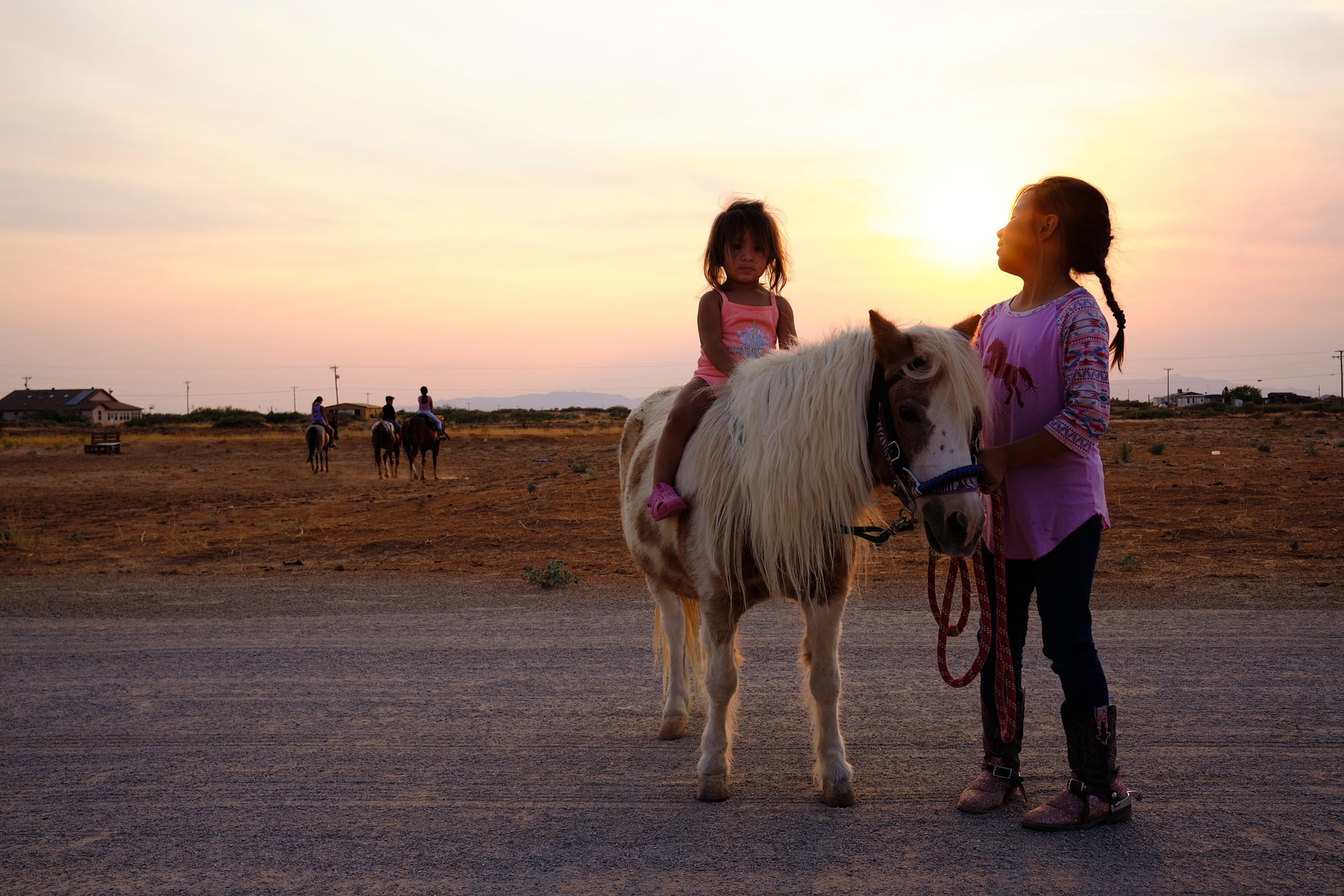
As with any sport, it’s best to start young while the brain can absorb all the minute twitches, pulls, bends, and thigh squeezes that are needed to effectively steer a galloping horse. Andy takes her 2-year-old sister, Hadley, out for a ride on the family pony, Elsa. Andy also learned to ride Elsa when she was just a toddler.
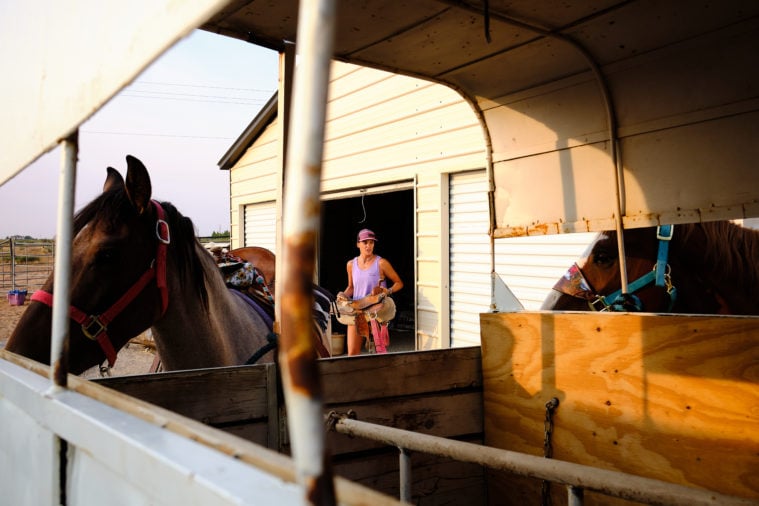
Byrd gets ready to saddle a horse before a practice run. Learning to care for horses is as much a part of barrel racing as the on-saddle steer and spur techniques. This part is a chore for Byrd. “You have to go clean their stalls, water, clean them, saddle them, work them out, feed them. But it’s part of it, not only to keep them alive but to develop a bond. The better you are to them, the better they’ll be to you,” she says. Byrd makes all her students saddle and groom their horses before class starts.
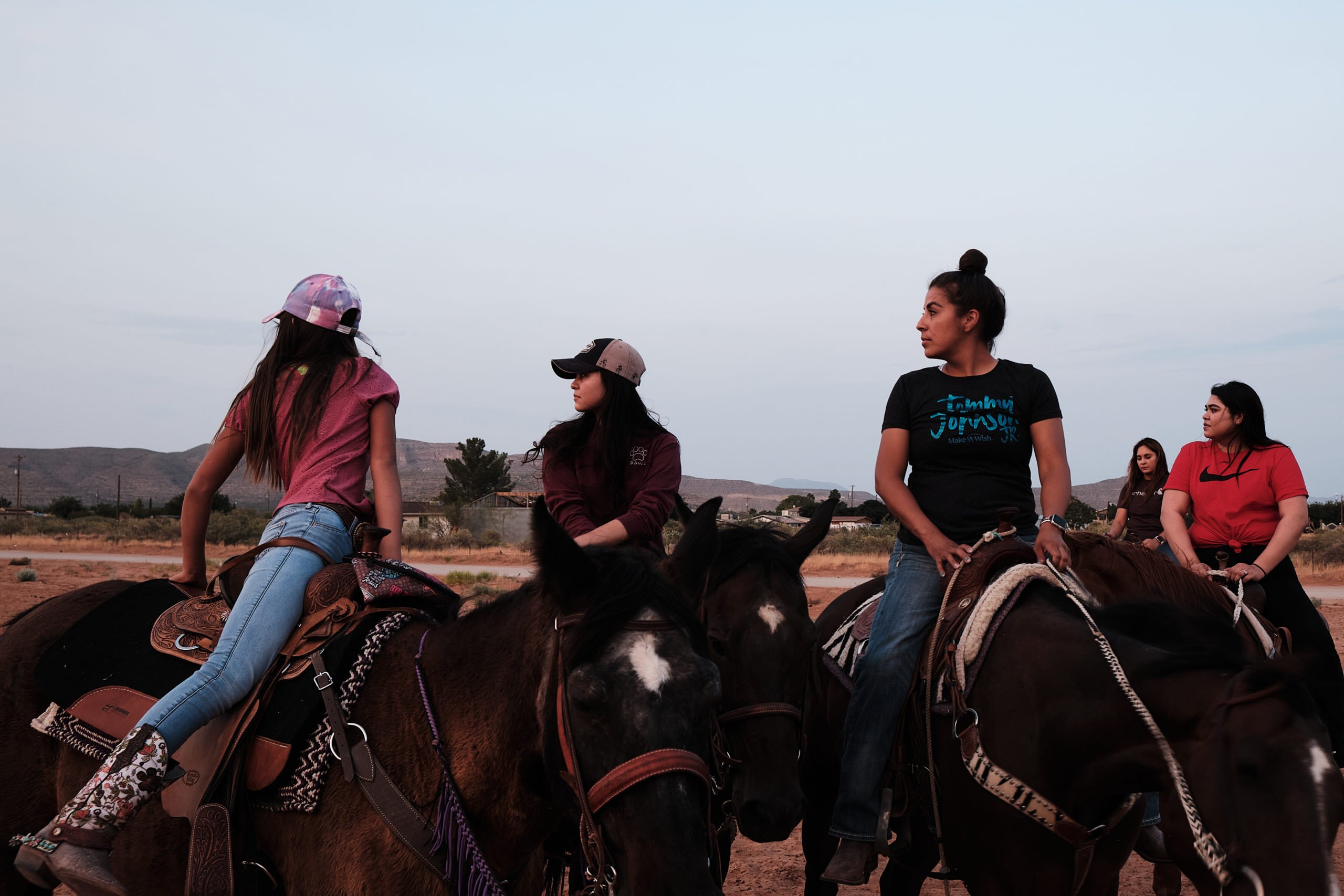
Patricia Quintanilla (third from right), Andy’s mom and a professional barrel racer and ride instructor, and her class look on anxiously as a student fights to regain control of an uncooperative horse. Quintanilla, 30, comes from a long line of riders and trainers. Her great-great-grandparents came to the El Paso area from Mexico and worked in the racehorse industry. The business stayed in the family until Quintanilla’s mother, disillusioned with the cutthroat nature of track racing, decided she wanted something different for her girls and pushed them into barrel racing. Quintanilla loves teaching barrel racing just as much as she loves competing: “It’s a great feeling being able to share it, being able to pass down everything I’ve learned. I don’t just want them to learn how to ride well. I want to teach them how to be safe and how to be humble too … I hope they’ll pass it on to the next generation the same way.”
Read more from the Observer:
-
ERCOT Is Refusing to Release Records On How it Prepared for the Winter Storm: The nonprofit corporation is asking Ken Paxton’s office for permission to ignore requests seeking information on the costliest winter storm in the state’s history.
-
Portraits of the Pandemic—Part Two: Last summer, we talked to nine Texans about their experiences with COVID-19. Now, we check back in with those folks—and hear from a few new ones—who have graciously shared their stories.
-
Industrial Facilities Released Millions of Pounds of Illegal Pollution During the Winter Storm: Many of them won’t face any consequences for the excess emissions that they pumped into the air, endangering the lives of communities downwind.







